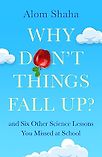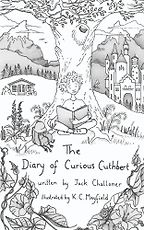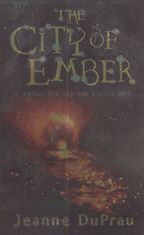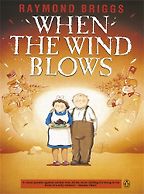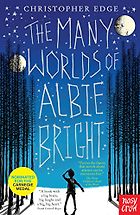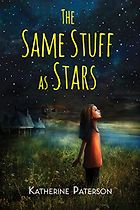What is science education for?
A lot of people think that the goal of science education is to produce future scientists. At the risk of being controversial and upsetting some of my fellow science teachers, I don’t think that that’s what science education is for, or at least not the only thing.
I don’t think science education in Britain reflects the fact that science is also a cultural activity. Just as I may occasionally have a burst of creativity and maybe do some kind of art at home or sing for pleasure, so I think one can ‘science’ — if I can use it as a verb — for one’s own benefit. Just as we believe it’s our cultural entitlement for all children to learn about Shakespeare, I think it is our cultural entitlement to learn about science.
Studying art and music and literature allows us to better appreciate art and music and literature. Similarly, studying science should equip us all to appreciate the fruits of science. It should also help us build an intellectual toolkit for our everyday lives, allowing us to look at, and think about, the world scientifically and assess the evidence — whether it be a treatment for weight loss or the difference between fake news and real news.
There’s a lovely word I found on the back of Mr. Shaha’s Recipe for Wonder: a ‘wondersmith’. What are you hoping to do with this book?
It was a deliberate choice to not include the word ‘science’ in the main title of my book. I really wanted to appeal to people who perhaps wouldn’t naturally gravitate towards anything labelled science. ‘Wondersmith’ is a great word I learned from my friend and regular partner in science communication, Jonathan Sanderson. In the book, I use it to mean someone who can generate wonder in children in both senses of the word – helping children to marvel and take awe in the natural world, but also to encourage them to ask questions. What’s going on? How does that work? What I want parents to do with the book is to become wondersmiths themselves.
My belief is that if we encourage children to look closely at the world and ask the right kinds of questions, we will set them on the path towards becoming truly scientifically literate. There is some research to support this. It shows that if parents have a positive attitude towards science, it can have a positive impact on students’ attitude towards, and attainment in, science throughout their school career.
We know that reading to your children is quite possibly the single best thing you can do as a parent. The educational benefits of being read to as a child are massive, regardless of socioeconomic and cultural background. My suspicion is that if, in addition to reading to our children, we also do the kind of activities I’m suggesting, there will be further educational benefits.
“If we encourage children to look closely at the world and ask the right kinds of questions, we will set them on the path towards becoming truly scientifically literate”
We live in a world with gross inequality, where the privileged few end up with the best jobs, running things. So if there is a way of reducing that inequality from childhood, as reading to children seems to do, and as exposing them to a better science education may do, then I’m all for it. I’m for anything we can do to reduce inequality in society. You might think, ‘Who is this guy? He thinks a science activity book is going to reduce inequality?’ Well that’s it. That’s my thing.
I’m sure lots of the people who are going to buy my book are nice middle class people who would have bought some sort of science activity book or other. But in the couple of months that it’s been out, I know this book is falling into the hands of people who would not otherwise have bought it or perhaps any book. I know that for a fact. That’s really exciting.
Okay, let’s talk about your first book choice, The Diary of Curious Cuthbert by Jack Challoner.
Jack Challoner has a really deep knowledge of science and science education, and is one of our most accomplished science communicators. But he is also one of our least famous. He has written about forty popular science books, including a recent book called Home Lab, which he ghostwrote for Robert Winston. It won the Royal Society Prize for best children’s science book, and no one knows Jack wrote it. I know that’s how ghostwriting works, but still, it seems a shame to me.
The Diary of Curious Cuthbert is, I think, one of his best books. It combines great storytelling and creativity with a really accurate and accessible explanation of the science. The book is filled with Jack’s love and knowledge of science, presenting the same kind of ideas that you would get in a popular science book in a gloriously creative manner. Sadly he had to self-publish it, even though he has written many popular science books, many of them bestsellers. Incredibly, however, no mainstream publisher would accept this book.
The story of the “Unwell Well” in the book is just a fantastic little story of the local village getting ill, and Curious Cuthbert finding out why and solving the problem. So, on one level, it works fantastically as a story. But it also includes scientific details about how microbes lead to disease and how scientific equipment can let us find out things we wouldn’t otherwise know — the way in which Jack conveys some of the biggest ideas in science to children, and all through rhyme, is just a wonderful accomplishment.
Your second choice is The Many Worlds of Albie Bright.
I chose it because I like its ambition, in trying to use some of the really big ideas in science. The kind of ideas that, when you’re a young person, you hear about, and you can’t help but go, ‘Wow, is the universe really like that?’ And I like that Christopher Edge was able to take a big idea like the many worlds hypothesis and marry it to a very human story of a boy’s longing to see his mother again.
And I have to be brutally honest, the story resonated with me particularly because I lost my mother when I was 13. So there was an obvious connection for me. I enjoyed it as an adult, but I would’ve absolutely loved it as a child.
Aside from the science, it’s sensitive and beautifully optimistic about the human condition. There’s this scene where Albie is in a parallel universe, where he ends up, if I recall correctly, with the female version of himself who is also a wheelchair user, and they’re at some kind of school dance competition. It’s got all the awkwardness and awfulness of being a young teenager, but then that somehow gives way to a magical moment when Albie and his female alter ego are on the dance floor and essentially pointing two fingers up at the school bully.
So it’s just full of emotions I can relate to. I work with young people and I read children’s literature because I think children’s literature is very rewarding to read. Usually it’s hopeful and optimistic in ways that, often, adult literature isn’t.
Let’s come on to your third choice, Jean DuPrau’s The City of Ember. This is a dark book in the sense that it’s set deep underground.
I love the world that DuPrau has created underground, and the way she described what it would be like if electricity was an incredibly rare resource. And I’m quite keen on post-apocalyptic literature anyway. Actually, I have quite a large collection of post-apocalyptic novels both grown-ups’ and children’s. But what it really comes down to is the writer’s ability to create characters that you care about, and DuPrau does this brilliantly. She introduces us to these two characters who you care about, and with whom you want to go on a journey.
The book and the quadrilogy of which it is part has a strong anti-nuclear theme. I wonder if, in the era of Trump, we will be seeing a resurgence of children’s literature dealing with power and oppression and with a strong anti-nuclear theme. We see this in, for example, Patrick Ness’s Chaos Walking trilogy, a work of genius, which — in a sci-fi and adventure story setting — deals with massive themes, everything from love to genocide to feminism and sexism and racism.
Tell us about your fourth book, Katherine Paterson’s The Same Stuff as Stars.
Paterson writes about damaged children. I had an unusual childhood, shall we say, so perhaps those kind of stories particularly resonate with me. There’s a line in the introduction where she says, “No child makes it without at least one caring adult in his or her life.” And that’s the theme that runs through at least a couple of her books — how children who are let down by other adults are often rescued by one or two caring adults. I teach young people, and I see the damage that is done to them when they’re not cared for. And that’s what this book is about, really.
“Just as we believe it’s our cultural entitlement for all children to learn about Shakespeare, I think it is our cultural entitlement to learn about science”
Yes, it’s got some science in it. The title is based on the scientific fact that the elements of which we are made will have been formed in a dying star. And that’s kind of mind-blowing to a lot of people. It is to me. But then again, if all you’re doing is saying, ‘Here’s a big thought, you’re made of the same stuff as stars,’ well that’s cheap, it’s easy inspiration. But you take that thought and put it into a human story, and it’s powerful.
Paterson writes very well about what it’s like to be a child in trouble. A child who, perhaps, has too many responsibilities thrust upon them at a young age. A child that has to take care of a younger sibling, a child whose parents desert them. I didn’t really have any adults taking care of me after the age of 13, and I was responsible for taking care of my siblings. And her writing strikes me as completely authentic.
This may be a fictional story, but the depiction of parental neglect and poverty and feeling alone and so forth, to me it feels very real. Also, as I commented before, like all good children’s books, it does end on a hopeful note.
Your last choice is When the Wind Blows by Raymond Briggs. Published in 1982, it depicts the aftermath of a nuclear attack on Britain. Few would describe it as a hopeful book!
I’m not even sure it’s a children’s book. I hear it was read by lots of MPs at the time and was made into an animated film that I don’t think many parents would want their children to have watched. I mean, is it a children’s book? Is it, perhaps, an inappropriate choice? I don’t know. But it’s a comic, and it was definitely available in the children’s section last time I looked.
Whilst I stand by my point that one of the great things about children’s literature is that it’s often hopeful, I also think great children’s literature can sometimes just tell it like it is. We’re seeing a trend in that recently. Some recent prize-winning books haven’t been so hopeful. For example, The Bunker Diary, which won the Carnegie prize in 2014, is one of the darkest books I’ve ever read.
And I think children can cope with darkness. The anti-nuclear message of When the Wind Blows is such an important one that I think Briggs was right not to sugar-coat it. But the reason why I picked it isn’t just because it was an anti-nuclear message, and I was obsessed … or I am obsessed with post-apocalyptic and anti-nuclear books. The reason why I pick it is because there is beauty in the relationship of the couple at the heart of the book. There is love and affection, and it’s that love and affection that is wiped out by this nuclear holocaust.
In a way, keeping it very small—rather than showing the end of the world, by just showing the end of this couple—brings us something tremendously powerful. I mean, what an act of genius. I’ve used that word a couple of times today, but actually, I think some of these writers are geniuses. I think telling stories that move us and make a point about the human condition, or society, is work that we should all aspire to do. I’m in awe of these people. I’m literally in awe of these people.
Five Books aims to keep its book recommendations and interviews up to date. If you are the interviewee and would like to update your choice of books (or even just what you say about them) please email us at [email protected]
Five Books interviews are expensive to produce. If you've enjoyed this interview, please support us by donating a small amount.

